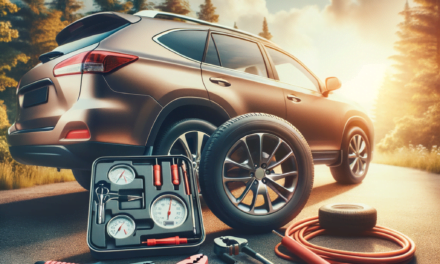As the winter chill sets in, many of us are bundling up and preparing for the change in our daily routines, especially when it comes to motoring and commuting. Whether you’re someone who drives, takes public transportation, or uses eco-friendly options like cycling or walking, the colder months present unique challenges and opportunities. Let’s explore how you can make your winter commute healthier, safer, and more enjoyable.
Stay Warm and Well on Your Winter Commute
Keeping warm is crucial during winter commutes. Layering is your best friend; it allows you to adjust your clothing based on the temperature inside your vehicle or public transport, and the cold outside. Here’s a quick layering guide:
- Base Layer: Choose moisture-wicking fabrics to keep sweat away from your skin.
- Insulating Layer: Add a fleece or wool sweater for insulation.
- Outer Layer: A waterproof and windproof jacket will protect you from the elements.
Driving Safely in Winter Conditions
For those who drive, winter roads can be treacherous. Black ice, reduced visibility, and other drivers’ unpredictability all contribute to the hazards. Here are some tips to keep you safe:
- Ensure your vehicle is winter-ready with appropriate tires, antifreeze, and a battery check.
- Drive slowly and increase your following distance to account for slippery roads.
- Keep an emergency kit in your car with blankets, a flashlight, and snacks.
Public Transport: Navigating the Busy Season
Public transportation can become more crowded and less reliable as people avoid walking or cycling in cold weather. To make your journey smoother, consider the following:
- Check schedules in advance to avoid waiting in the cold for delayed services.
- Carry a portable charger for your devices in case of unexpected delays.
- Stay informed about service changes through apps or transit websites.
Eco-Friendly Commuting in the Cold
Walking and cycling aren’t just for the warmer months. With the right gear, they can be viable winter options that contribute to your physical health and reduce your carbon footprint. Here’s how to stay safe and warm:
- Invest in thermal clothing, waterproof outerwear, and reflective gear for visibility.
- Use studded tires or shoe grips to prevent slipping on ice.
- Plan your route to avoid hazardous roads and take advantage of any winter maintenance like salted pathways.
Mental Health and Your Commute
The winter season can affect your mood and energy levels, making commuting feel like more of a chore. To combat this, try:
- Listening to upbeat music or engaging podcasts to boost your mood.
- Practicing mindfulness or deep breathing exercises if you’re feeling stressed.
- Using the commute time to plan your day or decompress before you get home.
Conclusion: Key Takeaways for a Better Winter Commute
Winter commuting doesn’t have to be a dreaded part of your day. With a little preparation and the right mindset, you can turn it into an opportunity for self-care and even enjoyment. Remember to:
- Dress appropriately in layers and invest in winter-specific gear.
- Stay safe by preparing your vehicle and being cautious on the roads.
- Use public transportation wisely, staying informed and prepared for delays.
- Consider eco-friendly commuting options for your health and the environment.
- Look after your mental well-being by finding ways to enjoy the journey.
Embrace the winter season with a positive approach to your daily commute. Stay warm, stay safe, and remember that spring is just around the corner!










